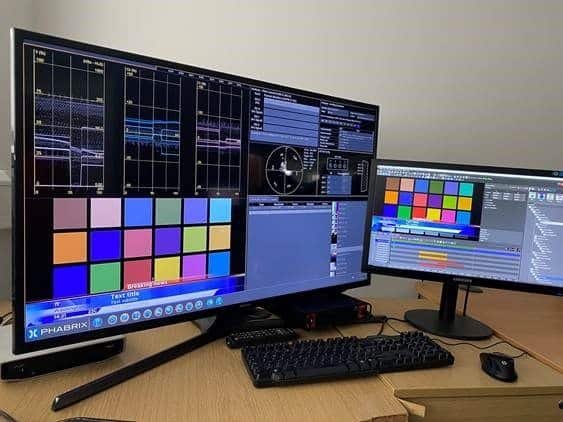Newbury, UK – 5 March 2020: London’s RT Software, an award-winning provider of innovative and industry leading broadcast graphics solutions to clients around the world, has bought a PHABRIX Qx rasterizer to ensure accuracy when implementing a new HDR-based workflow.
“With a new project to implement HDR, we needed to validate that our software and hardware output was within specification and generating the correct SDI signal, including correct VPIDs, correct colour gamut, and valid SDI signal values,” explains RT Software Development Director, Steve Hart.
Qx is the world’s first fully flexible rasterizer for hybrid IP/SDI analysis and video/audio monitoring and has been designed specifically to include all the tools required for transitioning to the next generation of video formats. Its comprehensive HDR and Wide Color Gamut (WCG) toolset offers instruments to enhance the visualization and analysis of 4K/UHD and HD content and speed up workflows and include a signal generator, CIE chart, Luma false color highlighting or “heat map”, vectorscope and waveform, all supporting Standard Dynamic Range (SDR) BT.709, BT.2020 as well as HDR BT.2100 HLG, BT.2100 PQ and Sony S-Log3 and SR Live. The heat-map provides 7 simultaneous programmable color overlay bands with presets for HDR and SDR ranges (including SR live), plus a user custom preset.
“We needed HDR PQ and HLG support and the Qx provides easy diagnostics for establishing correct conversions,” explains Hart. “Graphics requires us to convert HDR between YUV and RGB colour spaces, and without the ability to compare signals we could not be sure our implementations were correct.”
RT Software’s reasons for buying Qx included the desire for a flexible system that could expand to incorporate other standards measurements, specifically IP; the ability to override VPIDs when integrating with other not yet fully HDR compliant hardware; and, of course, meeting the exact balance of tools and price point.
The first project RT Software is using the new PHABRIX Qx on is for a major US broadcaster incorporating HDR into its channels. “We had to prove to them that we met the ITU/SMPTE recommendations for HDR and our system passed with flying colours,” says Hart.

